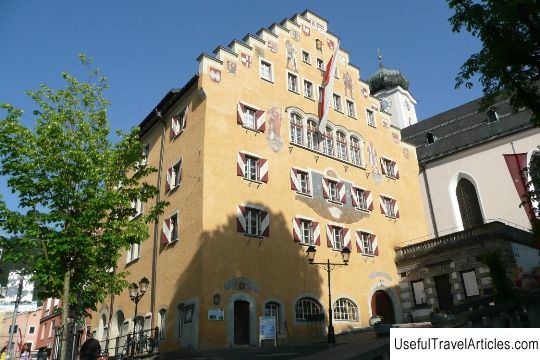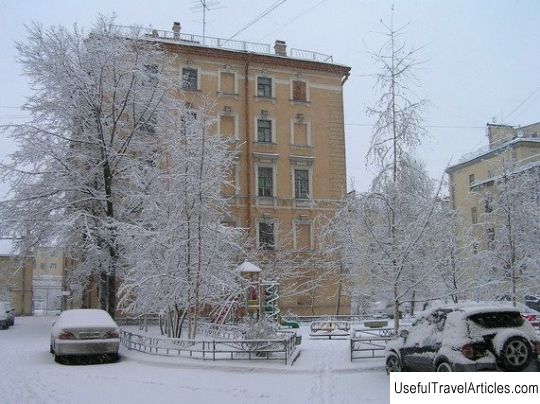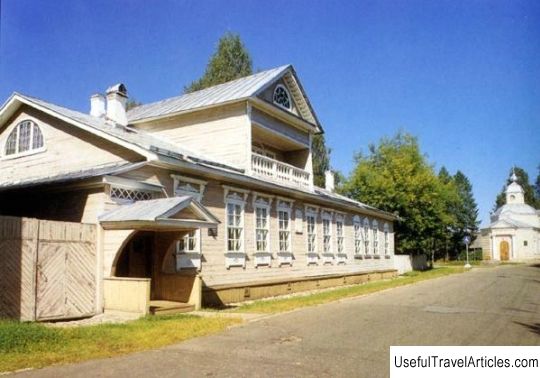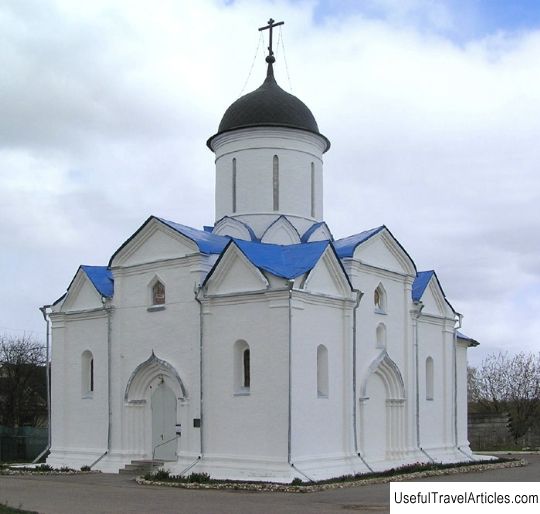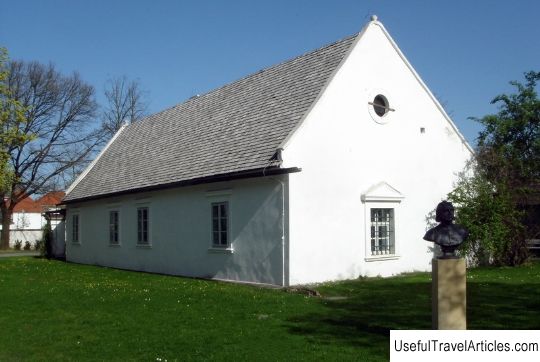House-Museum of P. I. Tchaikovsky description and photo - Russia - Moscow region: Klin
Rating: 8,1/10 (2343 votes) 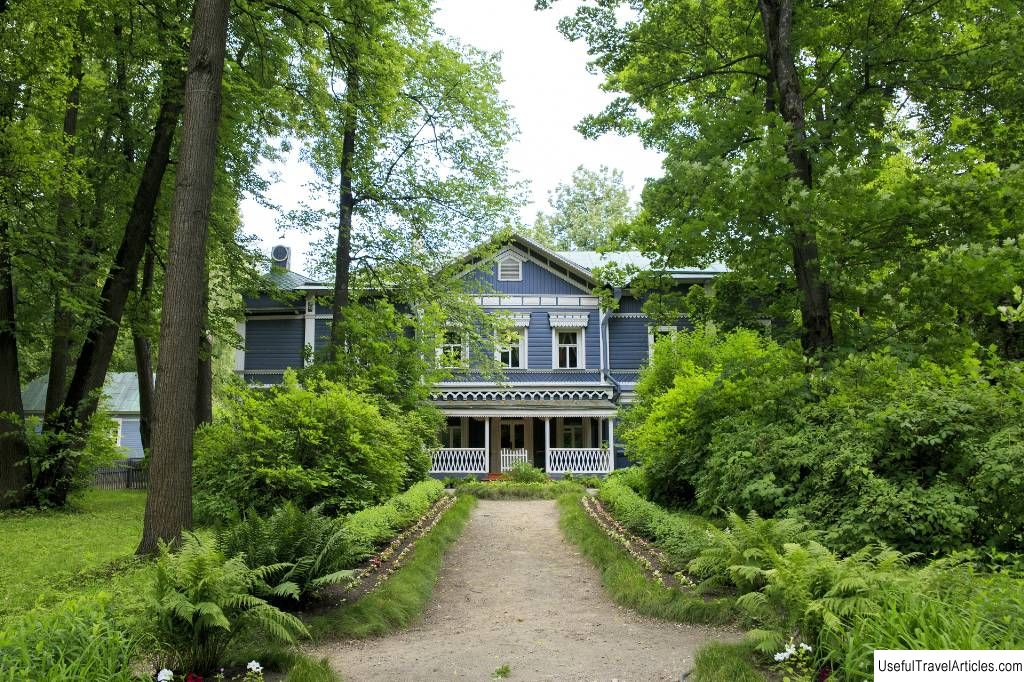
House-Museum of PI Tchaikovsky description and photos - Russia - Moscow region: Klin. Detailed information about the attraction. Description, photos and a map showing the nearest significant objects. Photo and descriptionThe Tchaikovsky House-Museum in Klin, Moscow Region, is a house preserved intact, in which the composer spent the last few years of his life. Now there is a museum, a cultural center and a concert hall. Pyotr Ilyich TchaikovskyPyotr Ilyich was born in 1840 on his father's estate in the Vyatka province. The family was musical: father and mother played music, there was a grand piano and an orchestra at home. The boy was sent to study at the Imperial School of Law in St. Petersburg. Then he became seriously interested in music and began to play the piano. But after graduating from college Peter became a lawyer . For a long time he tried to combine civil service and musical vocation, began to study at the Moscow Conservatory (then it was called the Moscow Musical Society). But in 1863, the young man still quit the service - it was impossible to combine it with music. The state career did not take place, there was no money, but creativity redeemed everything. Tchaikovsky graduated from the Conservatory with the highest award - a large silver medal - and officially became a "free artist". Gradually it becomes more and more popular. At this time, the so-called " The Mighty Handful " was formed - a circle of several young composers. These are M. Musorgsky, M. Balakirev, C. Cui, A. Borodin and N. Rimsky-Korsakov. Their task is to create a Russian school of composer's art, reflecting the Russian national spirit in music. P. Tchaikovsky is too independent to be a member of such a circle, but their ideas are close to him. It was under the influence of The Mighty Handful that he wrote the overture to Romeo and Juliet and the symphonic poem The Tempest . Tchaikovsky travels a lot during these years, actively participates in musical life as critic and theorist. He writes operas ("Blacksmith Vakula" and "Oprichnik"), the famous ballet "Swan Lake", and is also seriously engaged in musical pedagogy . He teaches composition at the Moscow Conservatory, and not only teaches, but also develops teaching aids and textbooks, translates foreign theoretical works. But in the end, Tchaikovsky also gave up teaching, concentrating entirely on creativity, although he had personal students even after that. In the late 70s, world fame came to him. For the 1812 overture he receives the order of St. Vladimir. He acts as a conductor, travels a lot, becomes an honorary doctor of the University of Cambridge and a member of the Paris Academy of Arts. All this time, despite his life in the capitals and numerous trips, he has his own personal "refuge" in Klin near Moscow. Tchaikovsky in Klin The composer needs a quiet and a quiet home, where he could fully focus on creativity, take a break from touring and social life. He rents the Maidanovo estate near Klin on the banks of the Sestra River. Its owner N. Novikova by that time was almost bankrupt and was happy to lease the estate. There is a wooden house here built in the 17th century. Despite its antiquity, it continues to be beautiful and cozy. Not far is the Demyanovo estate , where another famous composer lives, a friend of Tchaikovsky - Sergei Taneyev . Tchaikovsky lived in Maidanovo with interruptions in 1885-1887. The next spring he moved to another house - also near Klin. This is a mansion in the village of Frolovskoye . The local places seem to the composer to be more picturesque. In Frolovsky there are written " The Queen of Spades " and " Sleeping Beauty ". However, Frolovskoe turns out to be inconvenient: the owners do not care too much about the house, which needs repair, they sell the neighboring forest for felling - and Tchaikovsky returns to Maidanovo. It was in Maidanovo that the brilliant ballet " The Nutcracker ", which brought the author world fame, was written. Now both these estates - Maidanovo and Frolovskoe - are under the jurisdiction of the Tchaikovsky Museum. Only the manor park has survived in Maidanovo. Nothing has survived from the house and the wing, which the composer once rented; a memorial pavilion has now been built on the site of the wing. From Frolovsky, too, practically nothing remained. The manor house burned down in the Great Patriotic War, the remains of the outbuildings were demolished later. Now in Frolovsky you can see the remains of a park with a system of ponds, the foundation of a house and a memorial sign reminding how Tchaikovsky once liked these places. The estate of S. Taneev, Demyanovo, is also a cultural object. It was once visited by A.S. Pushkin, G.R.Derzhavin, P.A.Vyazemsky and others. At the time of P. Tchaikovsky, there was a real cultural center here: the artist A. Vasnetsov often came here to work, K. Timiryazev lived here for a long time and even had his own laboratory - he made himself a dacha in one of the garden pavilions. Tchaikovsky himself often came here on foot to chat with his friends. The manor house in Demyanovo is currently in ruins, in a slightly better condition is the "winter house" - one of the warm outbuildings of the estate. Preserved four ponds, grottoes, the remains of household and garden buildings. The estate of the Assumption Church of the 17th century has been preserved and operates now. Here in the cemetery S. Taneev himself and members of the P. Tchaikovsky family are buried. The museum plans to completely restore the historical appearance of the estate. Since 1892, Tchaikovsky moved to Klin itself and rented a two-story house. The house belonged to the magistrate judge M. Sakharov . It is small, but picturesque, with varied facades. It was the outskirts of the city, not a manor. But still, the house stood on its own plot with a small garden and a flower garden. The composer settles on the second floor, drinks his morning tea on the balcony in the form of a lantern, and works in his study. Here, in Klin, work on " Iolanta " has been completed. These are years of creativity and international recognition. It is here that the last great work was written - the 6th " Pathetic " symphony. P. Tchaikovsky himself conceived it as his final work about life and death. In the fall of 1893, Tchaikovsky left the Klin house forever. He travels to the capital for the premiere of a new symphony. She was greeted coolly by the public, but Tchaikovsky until the end considered it his best work. Literally a few days after his last premiere, the composer died of cholera in the same place, in St. Petersburg. They served him in the Kazan Cathedral and buried him in the necropolis of the Alexander Nevsky Lavra. History of the Museum The Tchaikovsky House was left intact by his heirs. His nephew and younger brother settled there, but in a specially made extension. The composer's brother, Modest Ilyich , not only preserved what was left of Pyotr Ilyich, but also specially began to collect his manuscripts, autographs, memorabilia, letters, posters from friends and acquaintances. He has kept the composer's huge music library. He also became the first biographer of his brother. Biography of Tchaikovsky was published in 1901-1902 simultaneously in Moscow and in Leipzig. M. I. Tchaikovsky bequeathed the house and everything collected in it to the Russian Musical Society on the condition that a museum would be created here. During the years of the revolution, the museum owes the preservation of the archive to the then director N. Zhegin . Fearing ruin, he took all the most important to Moscow. And a well-known anarchist settled in the house, who in the morning amused himself by firing a revolver at the portrait of the Pope, which hung in Modest Ilyich's room. Then they tried to "seal" the house by placing some institution there, and only at the end of 1918 did the museum continue its normal work. Moreover, its funds began to replenish, for example, the archive of Sergei Taneev from Demyanovo was received there. The museum continues to work before the war. The centenary of the composer is celebrated, archival materials are being published. During the Great Patriotic War, the funds were evacuated to Udmurtia. The house in Klin was badly damaged - barracks and a garage were arranged in it. But already in 1945 the museum was completely restored and opened an exposition. After the war, with the participation of a museum employee, the complete collection of Tchaikovsky's works is published. In the 1960s, the house was restored under the guidance of the architect A.N. Borshchevsky , in the 1980s a new restoration takes place. Since 1964, a concert hall has been opened here. The atmosphere of the house is almost completely inviolable. On the walls there are photographs of relatives and friends. Tchaikovsky was conservative, he furnished each of his dwellings in the same way, so this furniture visited both Maidanovo and Florovsky. Many personal belongings of the composer remain here - pince-nez, ashtrays, tuning forks and keys for tuning the piano and much more. Here you can also see numerous gifts and souvenirs brought by Tchaikovsky from his tour, for example, a tapestry fireplace screen or a figurine of a singing rooster. Each of these things has its own history. The main exhibit of the house is, of course, a musical instrument. This is a Becker grand piano . The famous firm gave Tchaikovsky this grand piano in 1885, it became his favorite instrument, and the composer played everything he had composed for it. This piano is played again twice a year. Concerts are held here on Tchaikovsky's birthday and on the day of death. In the park in front of the house there are several memorial trees , which were landed by the laureates of the International Competition. Tchaikovsky, they are marked with tablets in two languages. They still try to plant in the flower garden only those flowers that grew here under Peter Ilyich - lilies of the valley, levkoi and roses. A monument to the composer is erected in front of the house. PI Tchaikovsky sits on a garden bench in deep creative thought and reads the score. The author of the sculpture is A. Rozhnikov . Interesting factsThe Sixth Symphony was one of the "program" ones, that is, with some kind of verbal description and plot of works. But Tchaikovsky himself did not disclose this program; it was supposed to be "secret." It remains a secret to this day. Notes
    We also recommend reading Avraamiev Epiphany Monastery description and photos - Russia - Golden Ring: Rostov the Great Topic: House-Museum of P. I. Tchaikovsky description and photo - Russia - Moscow region: Klin. |
